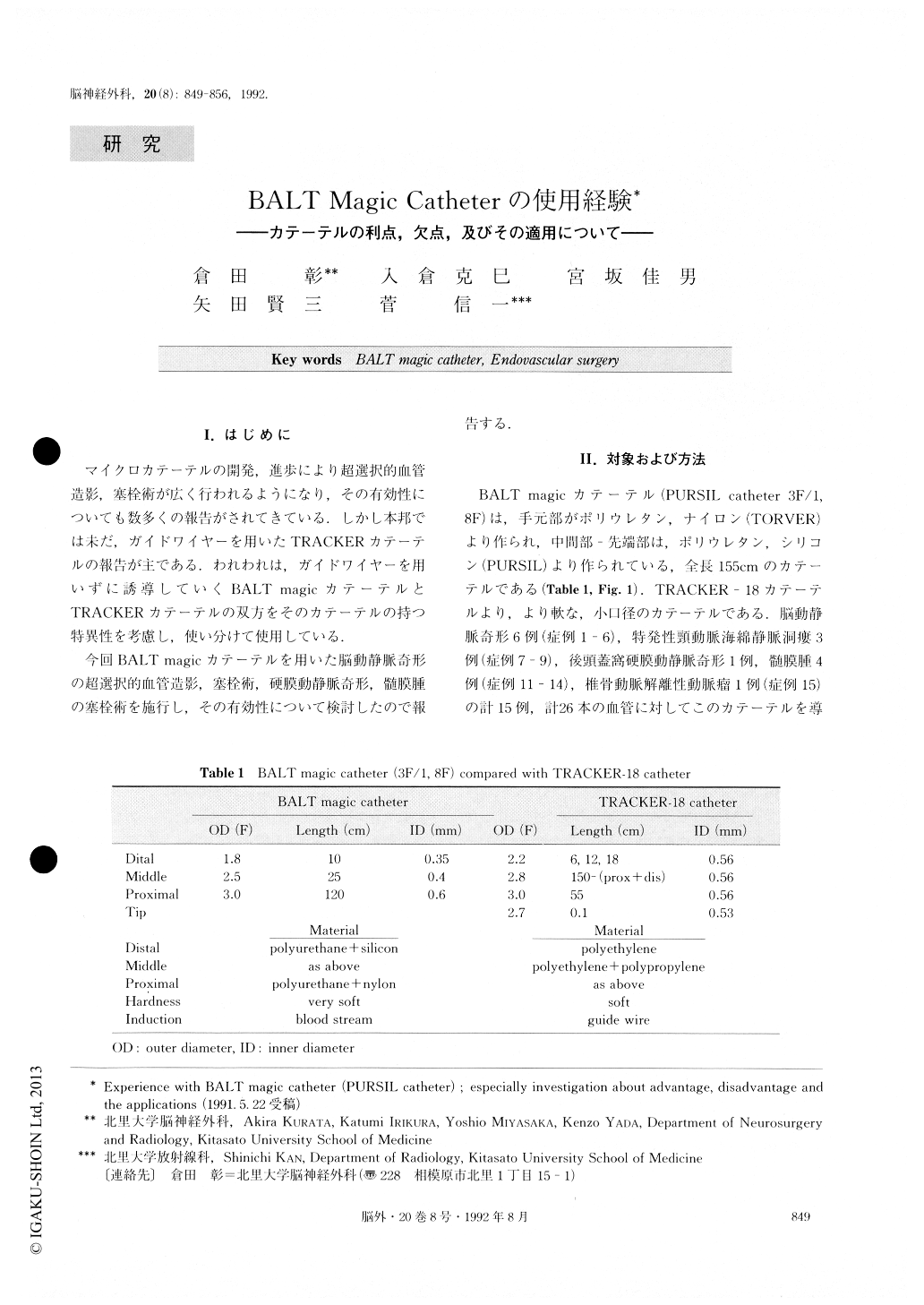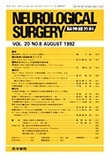Japanese
English
- 有料閲覧
- Abstract 文献概要
- 1ページ目 Look Inside
I.はじめに
マイクロカテーテルの開発,進歩により超選択的血管造影,塞栓術が広く行われるようになり,その有効性についても数多くの報告がされてきている.しかし本邦では未だ,ガイドワイヤーを用いたTRACKERカテーテルの報告が主である.われわれは,ガイドワイヤーを用いずに誘導していくBALT magicカテーテルとTRACKERカテーテルの双方をそのカテーテルの持つ特異性を考慮し,使い分けて使用している.
今回BALT magicカテーテルを用いた脳動静脈奇形の超選択的血管造影,塞栓術,硬膜動静脈奇形,髄膜腫の塞栓術を施行し,その有効性について検討したので報告する.
BALT magic catheter (PURSIL catheter) is a new catheter which is more flexible and pliant than the TRACKER-18 catheter because its mid-section and dis-tal portion are made from polyurethane and silicon rather than polyethylene. Because the PURSIL catheteris flexible, it cannot be inserted with a guide wire, although it can be inserted into circulation during injec-tion of contrast medium. Its inner diameter, 3.5mm, is smaller than that (5mm) of the TRACKER. There are few reports of embolization with the PURSIL catheter, and these describe only embolization using adhesive li-quid embolus material. Embolization using small par-ticles through the PURSIL catheter has never been re-ported. We report the catheterization using the PUR-SIL catheter of 26 arteries in 15 patients. The catheter was used for superselective angiography to clarify feed-er and amytal tests in 5 patients with AVM, and embo-lization using PVA particles (150-250 microns) was per-formed in 1 patient with AVM, 3 patients with dural AVM, 4 cases with meningioma and 1 patient with ver-tebral aneurysm. Small PVA particles were easily in-jected without resistance through this catheter. In only one patient with dural AVM, was catheterization with this catheter not successful, and that was because the distal portion of the internal maxillar artery was ex-tremely tortuous because of severe atherosclerosis. No complications associated with the use of this catheter were observed. We think that the greatest advantage of this catheter is the safety afforded by not using a guide wire. A disadvantage of this catheter is that, because of its small inner diameter, only small particles, or liquid embolus material can be injected through it. Another disadvantage is that its insertion is usually not easy, especially in patients with severe atherosclerosis, be-cause a guide wire can not be used. Selection of the most appropriate catheter for superselective angiogra-phy or embolization requires careful consideration of safety factors, as well as the advantages and disadvan-tages of each type of catheter. We conclude that, be-cause the PURSIL catheter is safer than the TRACKER-18 catheter, it should he the first choice for diagnostic superselective angiography or for emboliza-tion using small particles or liquid embolus material.

Copyright © 1992, Igaku-Shoin Ltd. All rights reserved.


